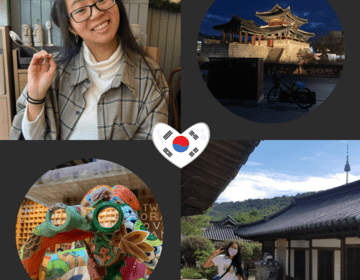5 Korean dishes for the vegetarian abroad
One of the hardest things about living in another country is figuring out the food. Depending on which city you live in, there is a chance that many restaurants will only have menus in Korean. If you are able to read Korean then this is not a problem, but if you have not yet learned the language this can make going out seem a bit scary and daunting.
For me, going out to restaurants is even more difficult since I am vegetarian. Many dishes in Korea have meat in them or have broths that are fish based. However, it is not impossible to be a vegetarian in Korea and there are several delicious foods that are meat free.
Personally, my ability to read and speak Korean is not very good. However, I made sure to learn enough basic restaurant vocabulary so I am able to say that I do not eat meat and ask what they have that is meat free. Even learning just a few simple words can go a long way in making it easier to order food at restaurants.
One of my favorite Korean dishes and my go-to at restaurants is Bibimbap.
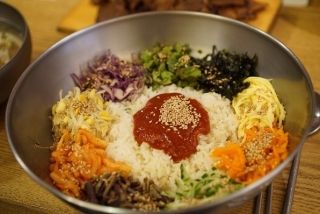
Bibimbap is a healthy dish that has a lot of flavor. It is a rice dish that comes with many different types of brightly colored raw vegetables. Since bibimbap can be made with many different types of vegetables, don’t expect it to be made the same everywhere you go. Some of the common vegetables to expect are shiitake mushrooms, carrots, soybean sprouts, zucchini, and purple cabbage.
It is also not uncommon for bibimbap to come topped with a fried egg, but don’t expect it to always have one. Since there are so many variations of the dish, I have found that it comes with an egg at only half the places I have ordered it.
Bibimbap gets a lot of its flavor from gochujang, a red chili paste. It may sound like the sauce would make it spicy since it is chili based, but it does not. It gives the rice a bit of a kick and helps to bring out the flavors.
The second vegetarian dish to try is dolsot bibimbap.
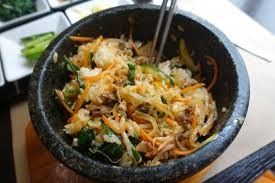
This dish is the exact same thing as regular bibimbap, but the difference is that dolsot bibimbap is served hot. It comes in a hot stone bowl that continues cooking the rice and vegetables as you eat. It is worth trying it prepared both cold and hot to see which way you prefer.
Another great dish to try is pajeon.
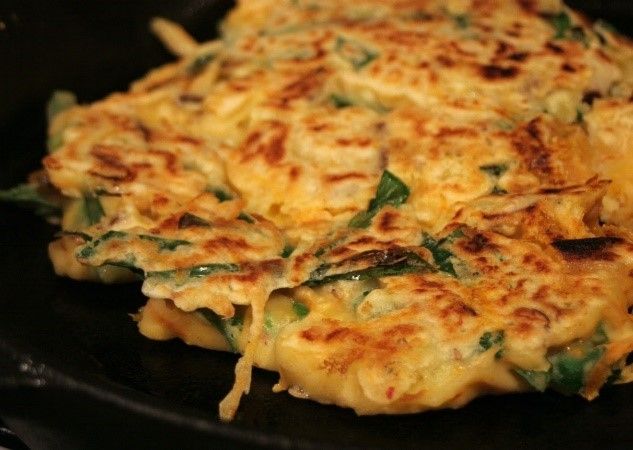
Pajeon is a very simple dish that translates to scallion pancake. Many times, it will be served as a side dish at restaurants or can be bought at local food stalls. Pajeon is made with only a few ingredients so it can also easily be made at home. It is also very easy to substitute the scallions for other vegetables such as green onions or chives.
If scallions are not really your thing, there are countless variations of jeon. Another kind that is very common is kimchijeon which uses kimchi in the pancake instead of scallions. Kimchi is a very traditional food in Korea and is eaten at almost every meal. It is a fermented vegetable dish that is usually pretty spicy, but goes very well in a pancake.
The fourth vegetarian dish I love is called yubuchobap.
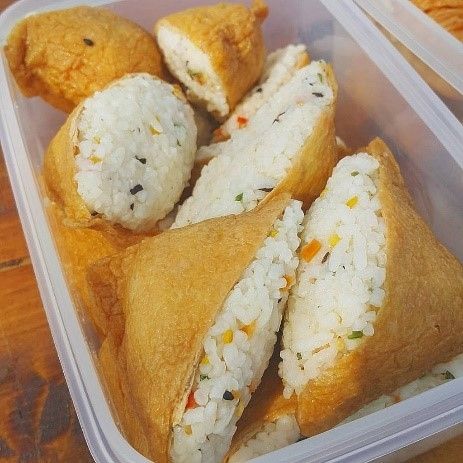
Yubuchobap is a fried tofu pocket that is stuffed with seasoned rice. I have not had this at a restaurant, but it is very easy to make at home. You can buy kits to make this at any market and is very simple to make.
First, you have to make the rice. While that is cooking, you open the kit and take out the tofu pockets. They come in a liquid to help keep them from drying out so you have to drain the liquid then carefully pop them open. Once the rice is done, you pour in the vinegar and the vegetable seasoning packet from the kit and mix well. Finally, all you have to do is put the mixture into each of the tofu pockets until they are full.
Yubuchobap is a very filling food that you could eat as a meal or as a side dish if you want to.
The final vegetarian dish to try in Korea is naengmyeon noodles.
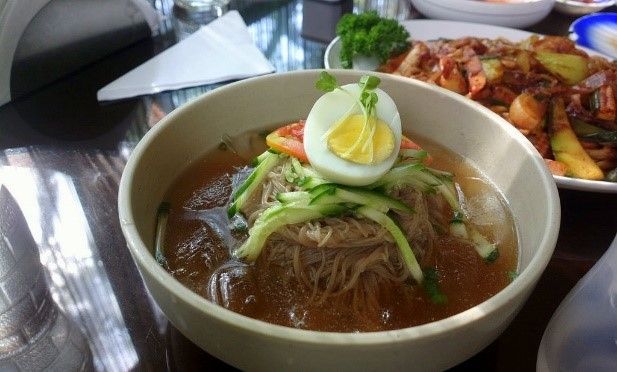
This noodle dish is often referred to as cold noodles as they are served in a cold broth that also has ice cubes in it. It is a very unique dish because of the ice cubes and has a very unique taste. The noodles are made from buckwheat so are a dark brown color. Naengmyeon usually comes topped with some vegetables, a fried egg, and a spicy chili paste.
One thing to keep in mind is that while there is no meat in the dish, many times the broth is beef based. You may have to ask about the broth before ordering naengmyeon.
This dish is not for everyone. Personally, I am not a fan of it since I do not care too much for the coldness of it or the taste of the noodles. This is a dish that you will either love or hate, but is definitely worth trying.
Being a vegetarian in Korea is possible with a little bit of work. There will be times where you will have to pick out the meat from foods. I do suggest being slightly flexible as well. As with the naengmyeon, many broths are based from fish or beef so I recommend being flexible with that. While I do not eat meat, I have learned that sometimes there is no easy way around broths so I will eat it even if it is meat based.
Overall, Korea has a lot of interesting foods to try and with a little bit of work even vegetarians can enjoy some of the local dishes.
Related Posts
How to Go to the Doctor in South Korea as an English Teacher: A Guide to Healthcare and Health Insurance
As an English teacher in South Korea, maintaining good health is essential while living abroad. Navigating the healthcare system can seem daunting and stressful at first, especially if you can’t... keep reading
CIEE CHINGU – A Partner Program for Teachers in Korea
Chingu ( 친구 ) is the Korean word for friend . CIEE Chingu is a partner program included in CIEE’s Teach in South Korea programs! Our goal is to connect... keep reading
TWICE with CIEE: Kayleigh in Korea (PART 1)
Kayleigh is a CIEE alum who participated in CIEE's Teach in South Korea program AND CIEE’s Teach in Spain Volunteer program! CLICK HERE to read her experience in Spain. WHY... keep reading




